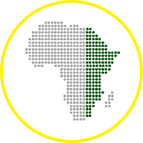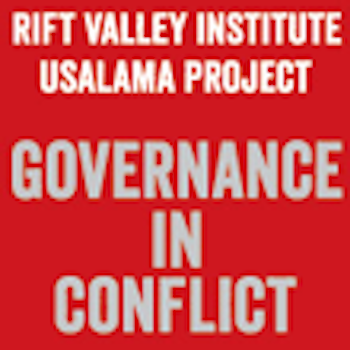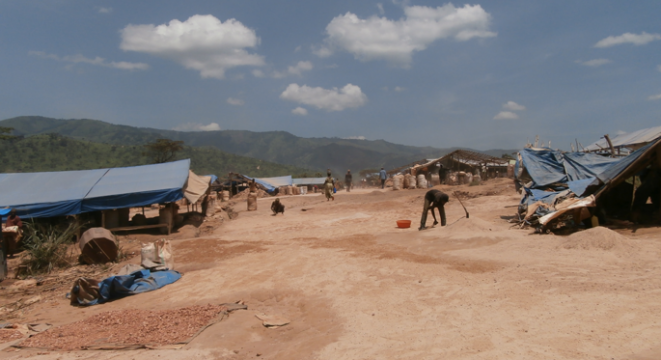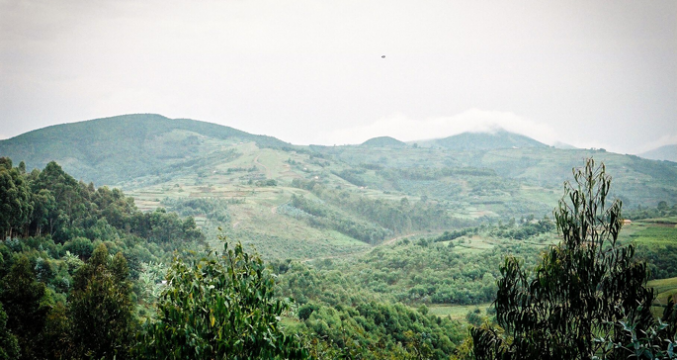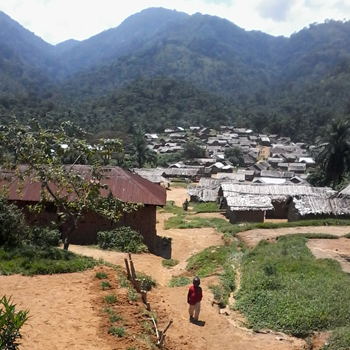The eastern Democratic Republic of the Congo (DRC) is home to dozens of armed groups. Studying these groups and the way they affect local governance and conflict dynamics is challenging. How can we gather reliable data on these groups? And…
News
SEARCH
NEWS TYPES
REGION
In this blog, Claude Iguma analyses the rumours and events surrounding an attack by an armed group on the gold mining site of Misisi in Fizi, South Kivu. These rumours, resulting from uncertainties about the perpetrators and their motives,…
Ce blog analyse les raisons pour lesquelles certains politiciens se donnent à s’ingérer dans les conflits autour du pouvoir coutumier, un phénomène en recrudescence dans les deux provinces du Kivu. Il soutient que les chefs coutumiers ne doivent pas…
This blog analyses the social and security situation in the groupement (local administrative unit) of Waloaluanda, located in the territory of Walikale in North Kivu province. It argues that the isolation of this area, which is partly a result…
Recent Publications
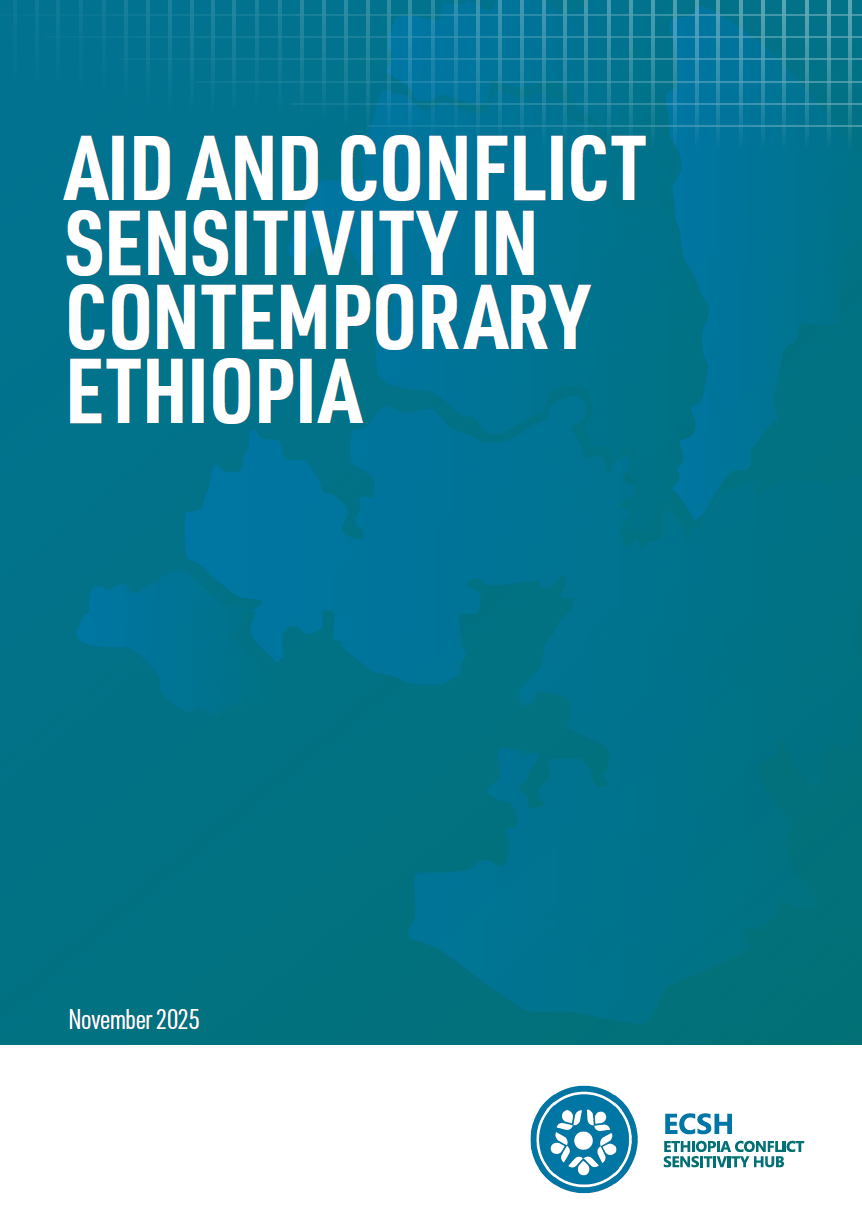
Aid and Conflict Sensitivity in Contemporary Ethiopia
November 17, 2025
This study assesses conflict sensitivity practices among humanitarian, development and peacebuilding (HDP) actors in Ethiopia. It seeks to raise awareness and foster a deeper understanding of the evolving aid landscape in the country while analysing the challenges that affect conflict-sensitive
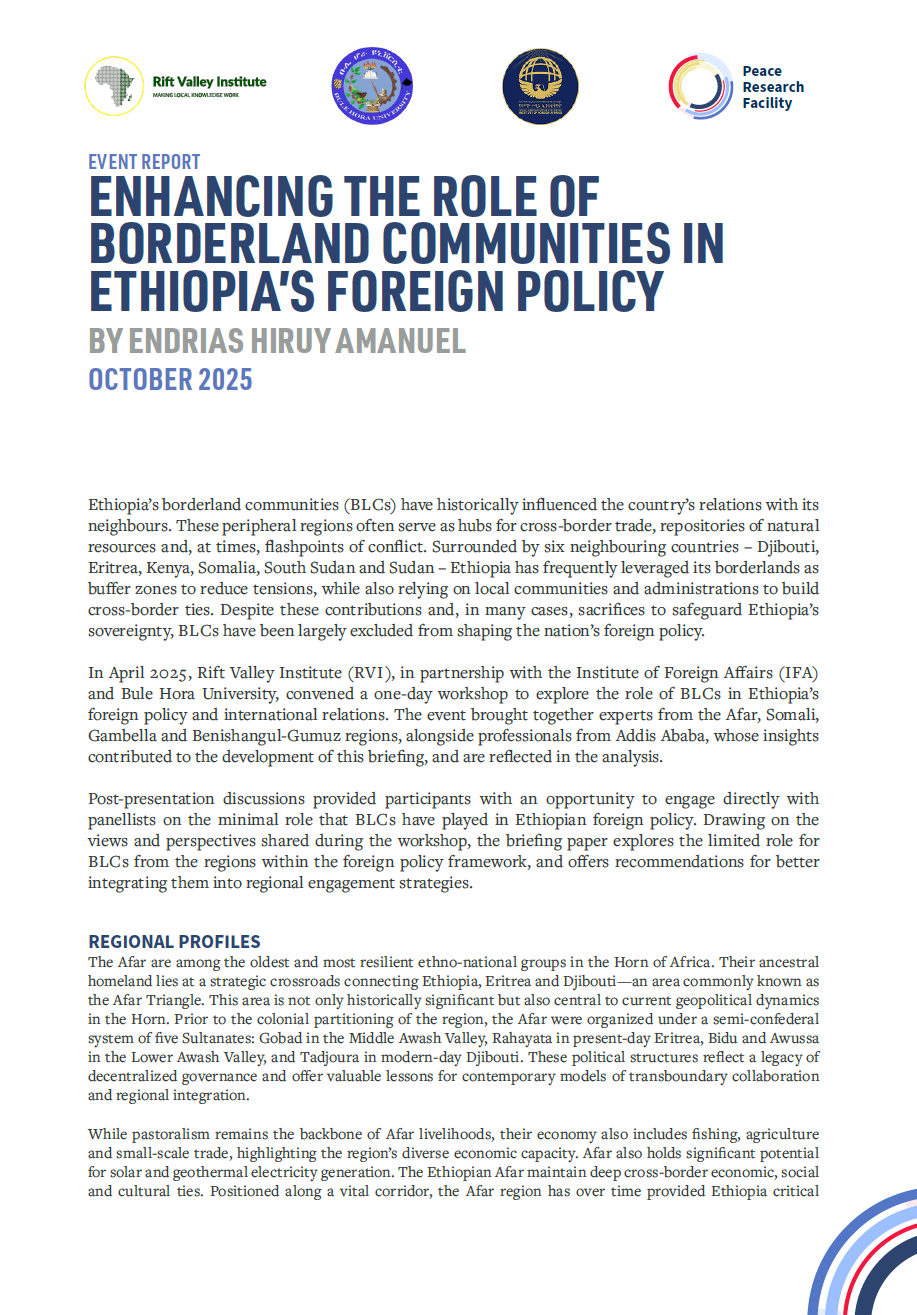
Enhancing the Role of Borderland Communities in Ethiopia’s Foreign Policy
October 15, 2025
Ethiopia’s borderland communities (BLCs) have historically influenced the country’s relations with its neighbours. These peripheral regions often serve as hubs for cross-border trade, repositories of natural resources and, at times, flashpoints of conflict. Surrounded by six neighbouring countries – Djibouti,
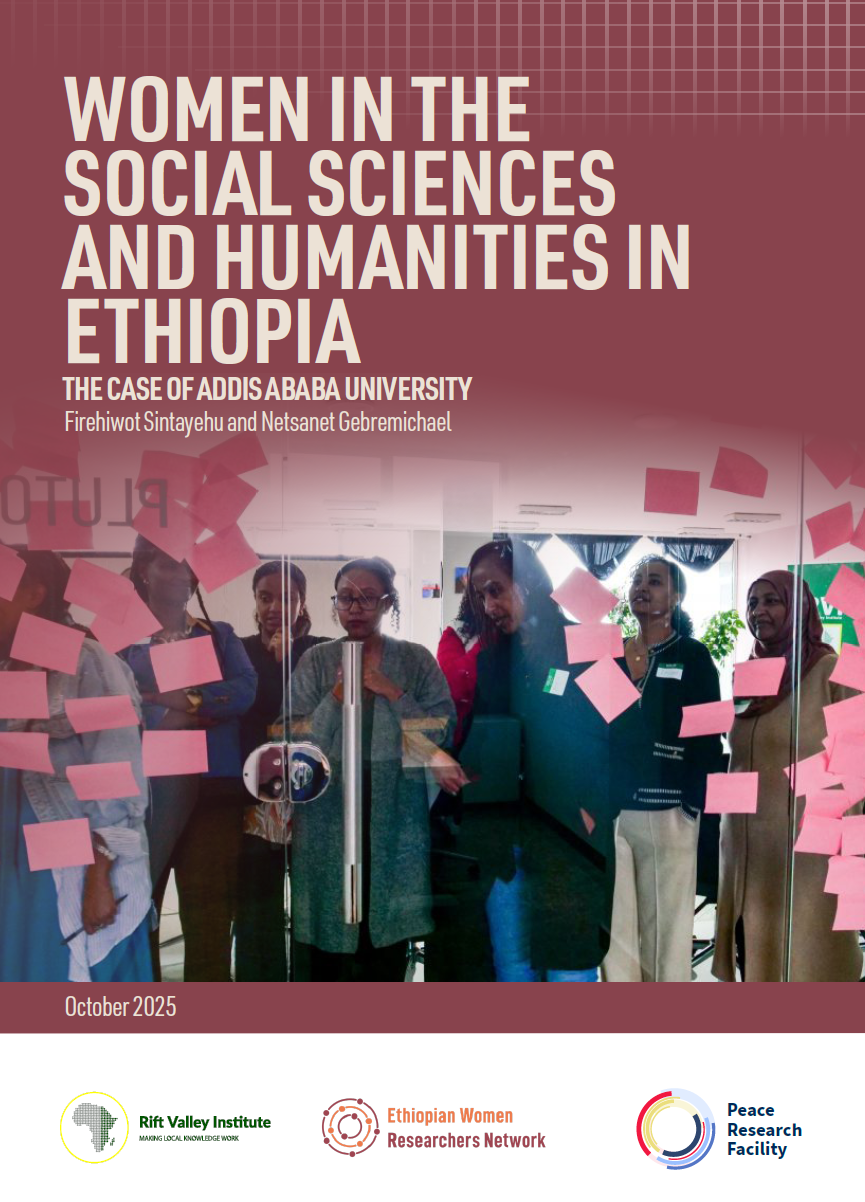
Women in the Social Sciences and Humanities in Ethiopia: The case of Addis Ababa University
October 10, 2025
This preliminary assessment is part of the launch exercise of the Ethiopian Women Researchers’ Network (EWNET). Focusing on Addis Ababa University as a pioneering higher institution in the country, the study looks into the status of women within these disciplines
